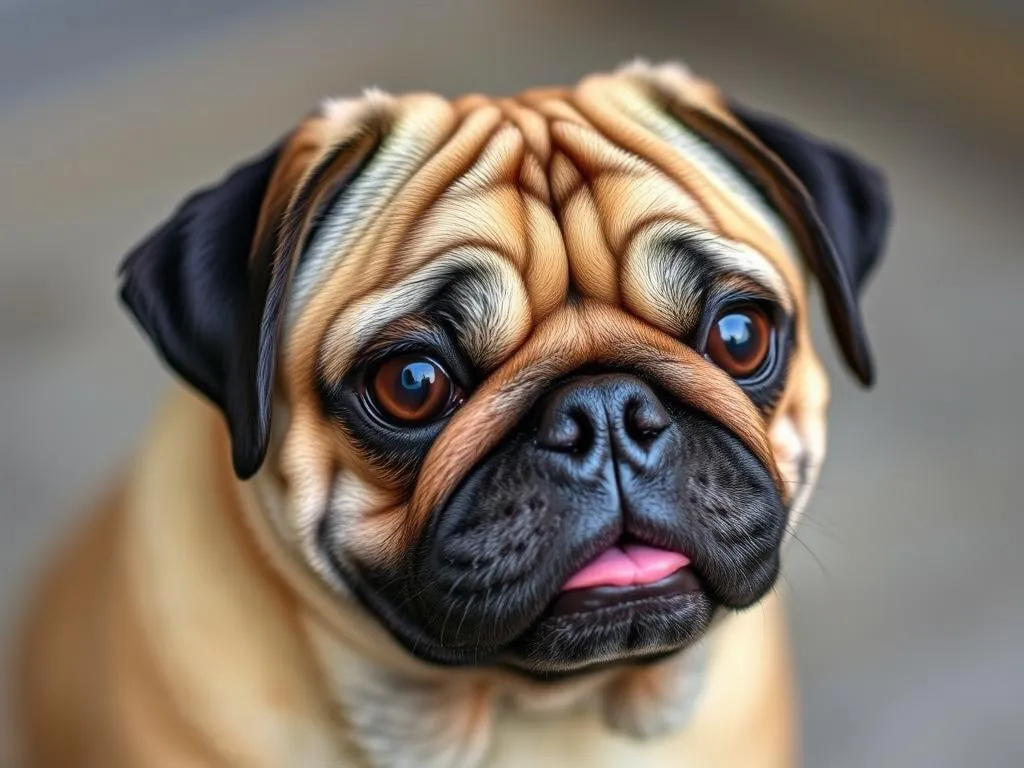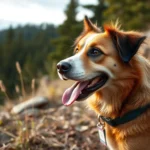
Training your pug is not just about teaching commands; it’s about building a strong bond, ensuring safety, and promoting good behavior. Pugs, with their unique characteristics, can present both challenges and advantages during training. This guide will help you navigate the nuances of training a pug effectively.
Understanding the Pug Breed
Characteristics of Pugs
Pugs are small, sturdy dogs known for their charming appearance and playful demeanor. They typically weigh between 14 to 18 pounds and have a compact, muscular build. Their short, curled tail and distinctive wrinkled face give them an endearing look that many dog lovers adore.
Temperament is a significant aspect of pug training. Pugs are affectionate and playful, often seeking attention from their owners. However, they can also be quite stubborn, making it essential to employ specific strategies during training. Their behavioral traits lean towards being attention-seeking, which can be both a challenge and an advantage when incorporating training sessions into playtime.
Why Training is Essential for Pugs
Training is crucial for pugs, as it helps shape their behavior and enhances socialization. A well-trained pug is less likely to develop behavioral issues such as excessive barking or jumping, which can stem from a lack of structure. Additionally, training fosters a sense of security and confidence, allowing your pug to interact with other pets and people without fear or aggression.
The consequences of neglecting training can be significant. Pugs are known for their strong personalities, and without proper guidance, they may develop undesirable habits that are difficult to correct later on.
Preparing for Training
Setting Realistic Expectations
When embarking on your journey of how to train a pug, it’s vital to set realistic expectations. Understanding that pugs learn at their own pace can help reduce frustration. They may not pick up commands as quickly as other breeds, but with patience and consistency, progress will come.
Essential Training Tools
To facilitate effective training, having the right tools is essential. Here are some recommended training equipment and aids:
- Collars and Leashes: A comfortable collar and a sturdy leash are crucial for outdoor training sessions.
- Treats: Use small, tasty treats as rewards to motivate your pug.
- Clickers: A clicker can help mark desired behaviors, making training more efficient.
- Training Mats: These can be useful for teaching your pug where to settle during training sessions.
Creating a positive training environment is equally important. Choose a quiet space with minimal distractions to help your pug focus during training.
Basic Training Commands
Sit
Teaching your pug the “sit” command is fundamental. Here’s a step-by-step guide:
- Get your pug’s attention: Hold a treat above their nose.
- Move the treat: Slowly move the treat back over their head. As their head goes up, their bottom will naturally lower.
- Say “sit”: Once they are in the sitting position, say “sit” and reward them with the treat.
- Reinforce: Repeat this process several times.
Common mistakes to avoid include pushing down on the pug’s rear, which can cause confusion.
Stay
To teach the “stay” command:
- Start with “sit”: Begin with your pug in the sitting position.
- Use your hand: Extend your palm outward towards them while saying “stay.”
- Take a step back: If they stay, reward them. If they move, gently guide them back and try again.
- Gradually increase distance: Start with a short distance and work your way up.
Troubleshooting: If your pug struggles, ensure you’re using a calm voice and rewarding them immediately for staying.
Come
Teaching the “come” command is vital for safety:
- Start indoors: Use a leash and have your pug in a sitting position.
- Call their name: Use an enthusiastic tone and say “come” while gently pulling on the leash.
- Reward: When they come to you, reward them with treats and praise.
Recall training is crucial; it can prevent dangerous situations.
Other Basic Commands
In addition to “sit,” “stay,” and “come,” consider teaching your pug commands like “down,” “leave it,” and “heel.” Here’s a brief overview of techniques for each:
- Down: Use a treat to guide them down from a sitting position.
- Leave it: Show them a treat, then cover it and say “leave it.” Reward them when they ignore it.
- Heel: Practice walking beside you while keeping a loose leash, rewarding them for staying close.
Variety in training keeps your pug engaged and eager to learn.
Advanced Training Techniques
Socialization
Socialization is crucial for pugs to develop well-rounded personalities. Introducing your pug to various environments, people, and other pets can help reduce anxiety and aggression.
Tips for socialization include:
- Taking them to dog parks.
- Arranging playdates with other dogs.
- Exposing them to different sounds and sights, like children playing or traffic.
Leash Training
Effective leash training is essential for pugs, as they can be prone to pulling:
- Use a comfortable harness: This can prevent discomfort when they pull.
- Practice loose-leash walking: Reward them when they walk beside you without pulling.
- Common problems: If your pug pulls, stop walking and wait until the leash is loose before continuing.
Crate Training
Crate training offers numerous benefits, including providing a safe space for your pug.
Steps for crate training:
- Introduce the crate: Let your pug explore the crate with the door open.
- Use treats: Encourage them to enter by placing treats inside.
- Close the door gradually: Once comfortable, start closing the door for short periods.
- Increase duration: Gradually increase the time they spend in the crate.
Addressing potential issues such as anxiety can involve gradually desensitizing your pug to the crate and ensuring they associate it with positive experiences.
Addressing Behavioral Issues
Common Behavioral Problems in Pugs
Pugs can exhibit various behavioral problems, including excessive barking, chewing, and jumping. Identifying triggers and underlying causes is key to addressing these issues.
Strategies for Behavior Modification
Employing positive reinforcement techniques can be effective. Rewarding good behavior encourages your pug to repeat it.
- Distraction and redirection: When your pug engages in undesirable behavior, redirect their attention to a toy or another activity.
- Professional help: If issues persist, consider seeking advice from a professional dog trainer or behaviorist.
Maintaining Training Consistency
Importance of Routine
Establishing a consistent training routine is vital. Regular practice reinforces learned commands and behaviors. Aim for short, daily sessions to keep your pug engaged and focused.
Engaging the Family in Training
Involving family members in training sessions can enhance consistency. Ensure that everyone uses the same commands and techniques. Making training a fun family activity fosters bonding and encourages good behavior.
Conclusion
Training your pug is a rewarding journey that strengthens your bond and enhances their behavior. By understanding the unique characteristics of pugs, preparing adequately, and practicing essential commands, you can achieve remarkable results. Remember to maintain consistency, engage your family, and address any behavioral issues promptly. Embrace the adventure of training your pug, and enjoy the companionship that comes from a well-trained dog.









